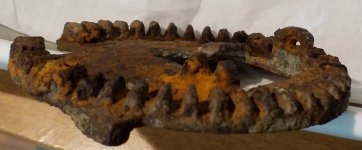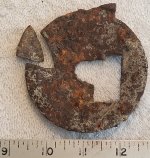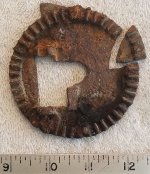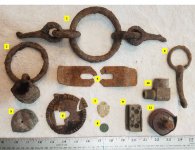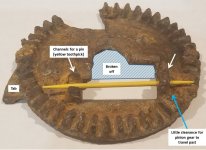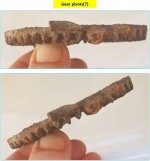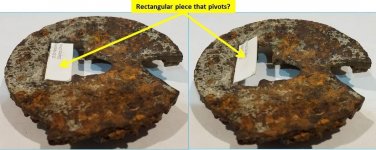invent4hir
Bronze Member
- Aug 1, 2017
- 1,798
- 2,746
- 🏆 Honorable Mentions:
- 3
- Detector(s) used
- Whites V3i & DFX
- Primary Interest:
- All Treasure Hunting
All, I’ve been detecting the former home site of an officer who served during the War of 1812. When he wasn’t serving in the military or as a civic leader, he worked as a blacksmith. He built the home in the early 1800s and lived there until his death in 1850. The home has been occupied on and off up until the 2000s. Unfortunately, at one point when the home was unoccupied, it became a “party” place — and the amount of cans, tabs, etc. is nearly overwhelming. Despite this, I managed to dig a few artifacts that I need help IDing and estimating the age. In the first picture they are # 1-3 and 6. I’m guessing #1-3 are some sort of horse or wagon tack — but would like confirmation/correction and age. Number 6 looks like a gear, and there is some lettering arranged in an arc on the side with the teeth that I’m unable to make out — so I’m providing a few close-ups. Note: These artifacts will be offered to the local historical society, who in the past has asked that only the worst of the dirt be removed.


